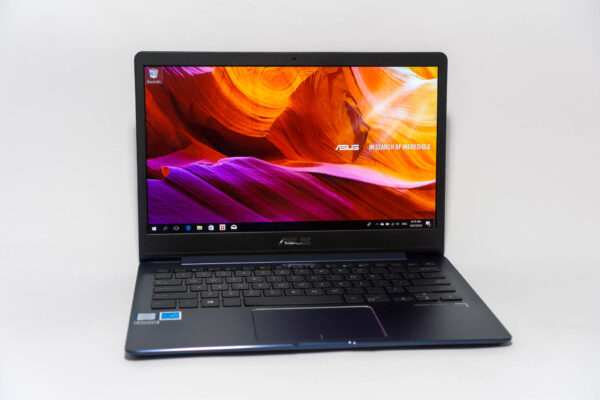
ASUS’ line of ZenBook notebooks have a very recognisable design. The latest in their ultralight notebook category, the ZenBook 13 UX331, is unmistakably so, but a glossy twist on this notebook’s top case makes it particularly unique. But this UX331 isn’t just pretty; it’s also really powerful for an ultrabook, even featuring a dedicated GPU.
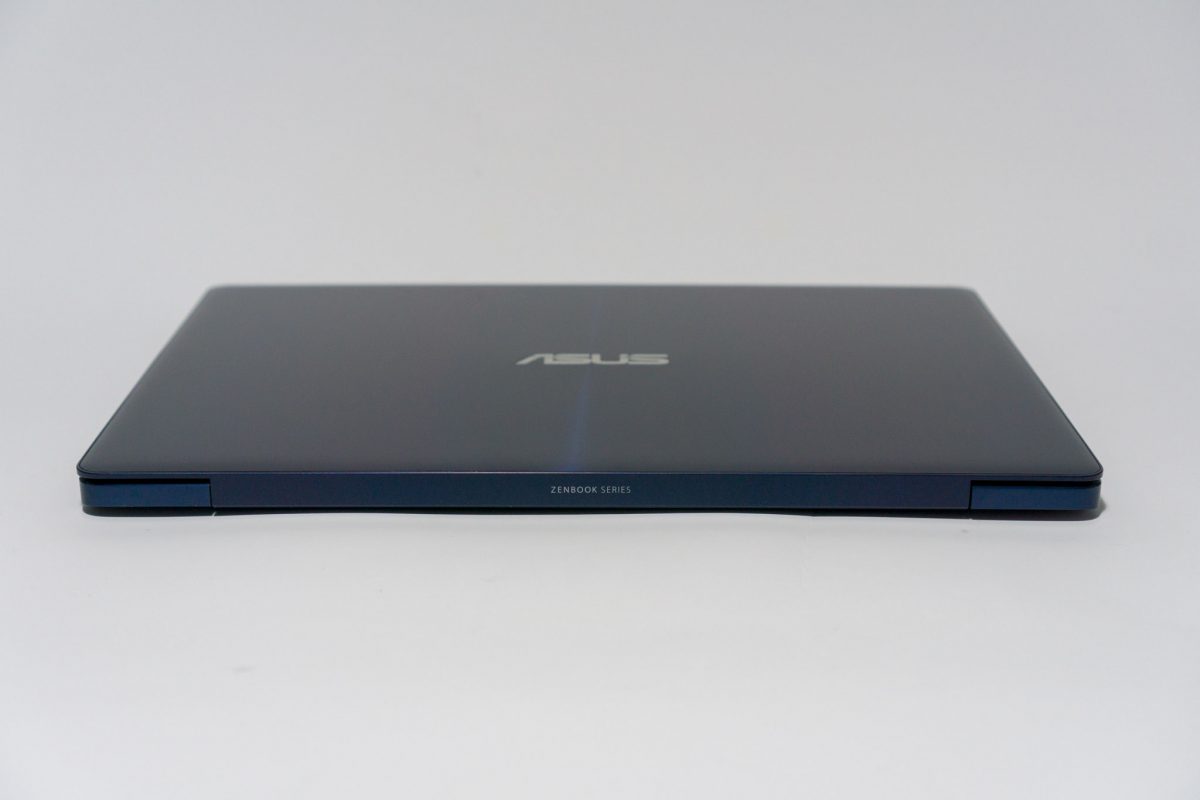
The ASUS ZenBook 13 UX331 is thin (13.9 mm) and light (1.12 kg). It’s what you’d expect of ultrabooks. This notebook, with a 13-inch display, has a form factor of 310 x 216, so overall, this is a compact, easy-to-carry around, device. It’s also beautiful, of course, but perhaps what’s most interesting, particularly for those already familiar with the typical ZenBook design, is the top case of this UX331.
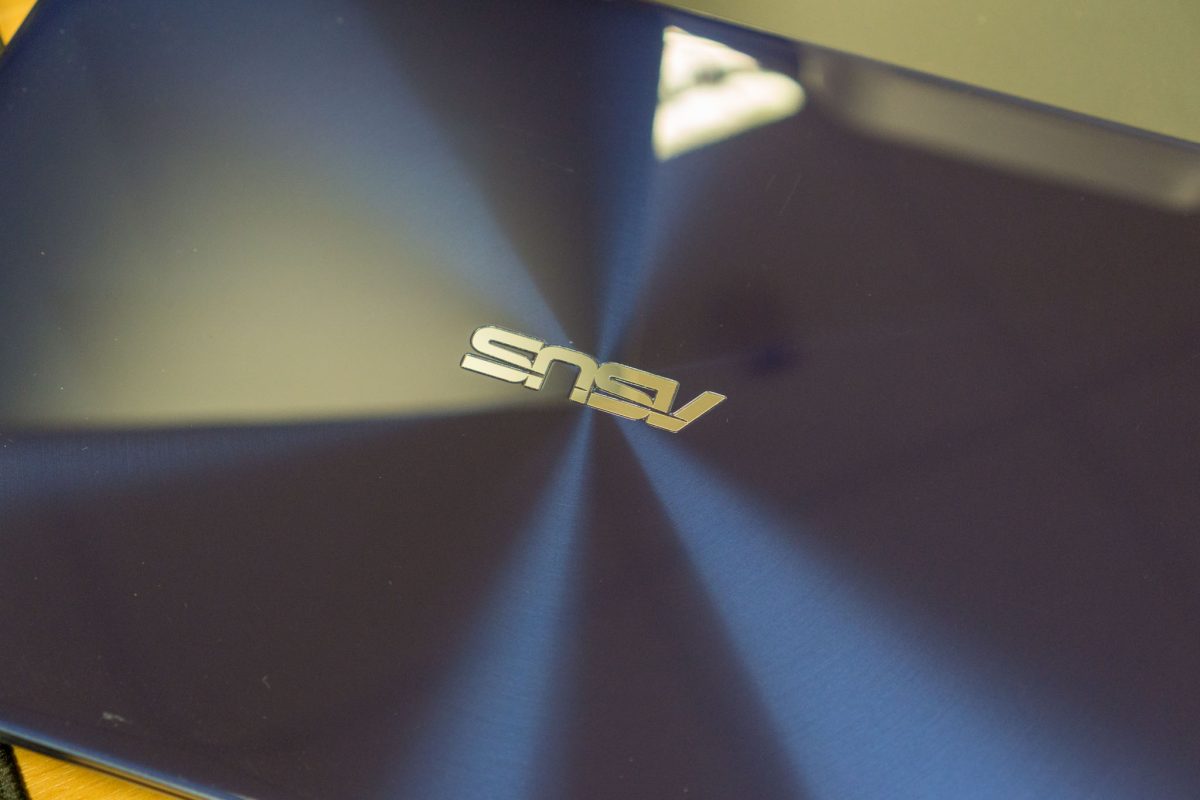
That shiny glass top is absolutely stunning. After a soak in that fascinating new shiny surface for a few minutes, I discovered the next stunning thing. It’s actually not glass. The top case is metal, like other ZenBook notebooks. Still the spun metal concentric circle pattern. But why does it feel different?
It turns out the top is finished with a nanoimprint lithographically etched into the surface. I’ll tell you this, it feels just like glass. Complete with very capable and efficient fingerprint magnet, probably the biggest downside of this new finish. but this is a unique twist to the ZenBook design that makes the UX331 even more attractive.
The ZenBook 13 UX331 has a decent port offering. On the left side, you’ll find a DC power barrel jack, a HDMI port, a USB 3.0 (3.1 gen 1) Type-A port, and a USB 3.1 gen 2 Type-C port. The right side adds a microSD slot, 3.5 mm audio jack, and another USB 3.0 Type-A port.
I personally prefer to see more USB Type-C ports these days, but the biggest downside of this USB Type-C on the UX331 is that it cannot be used to charge the notebook. Could it be that the dedicated GPU requires too much power and thus necessitating a separate DC barrel input? I think not, considering that the included charging adapter is rated at 45 W, well within the capability of USB Type-C Power Delivery specifications.
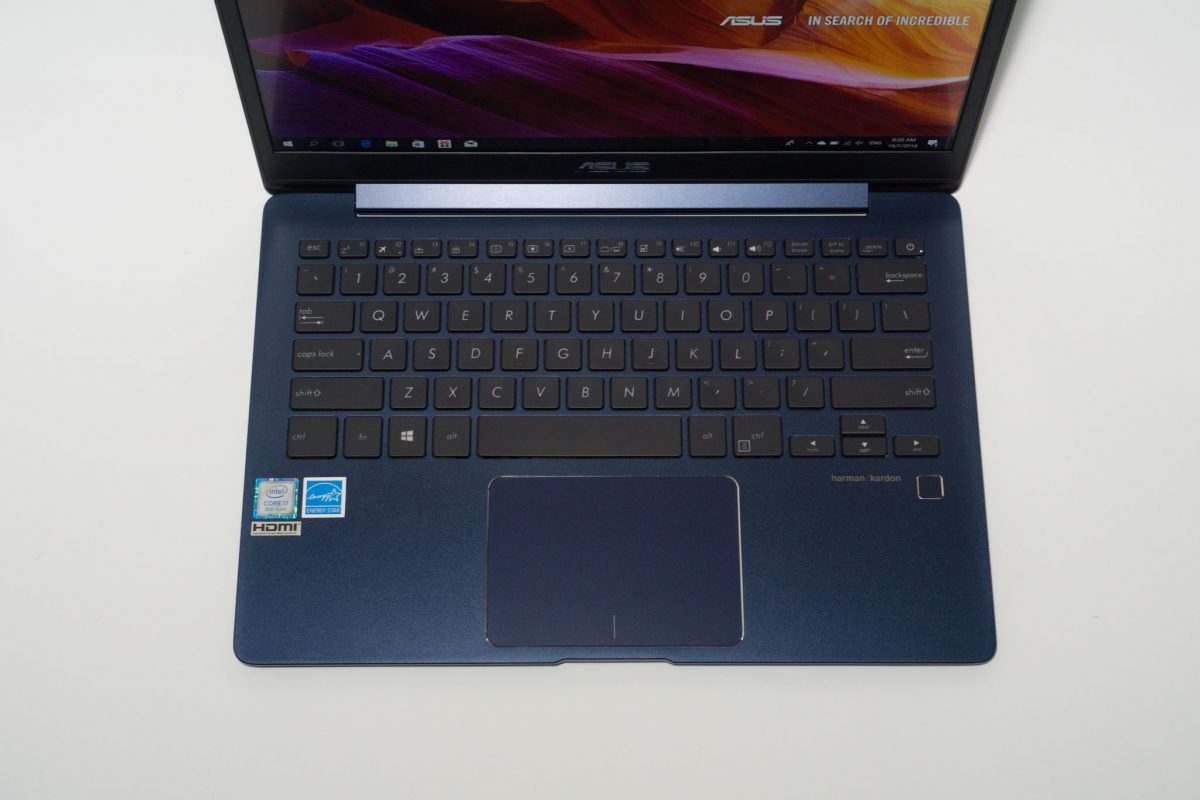
Despite the short 1 mm key travel, the keyboard on the ZenBook 13 UX331 feels good to type on. The keys are clicky, reasonably spacious, and ASUS doesn’t surprise you with any unusual key arrangements.
The Windows Precision touchpad below is spacious too, at least for PC notebooks. The glass-fibre coated surface feels very smooth and is enjoyable to use.
On the right side, below the keyboard, lies the fingerprint sensor. It’s fast, and works like it should.
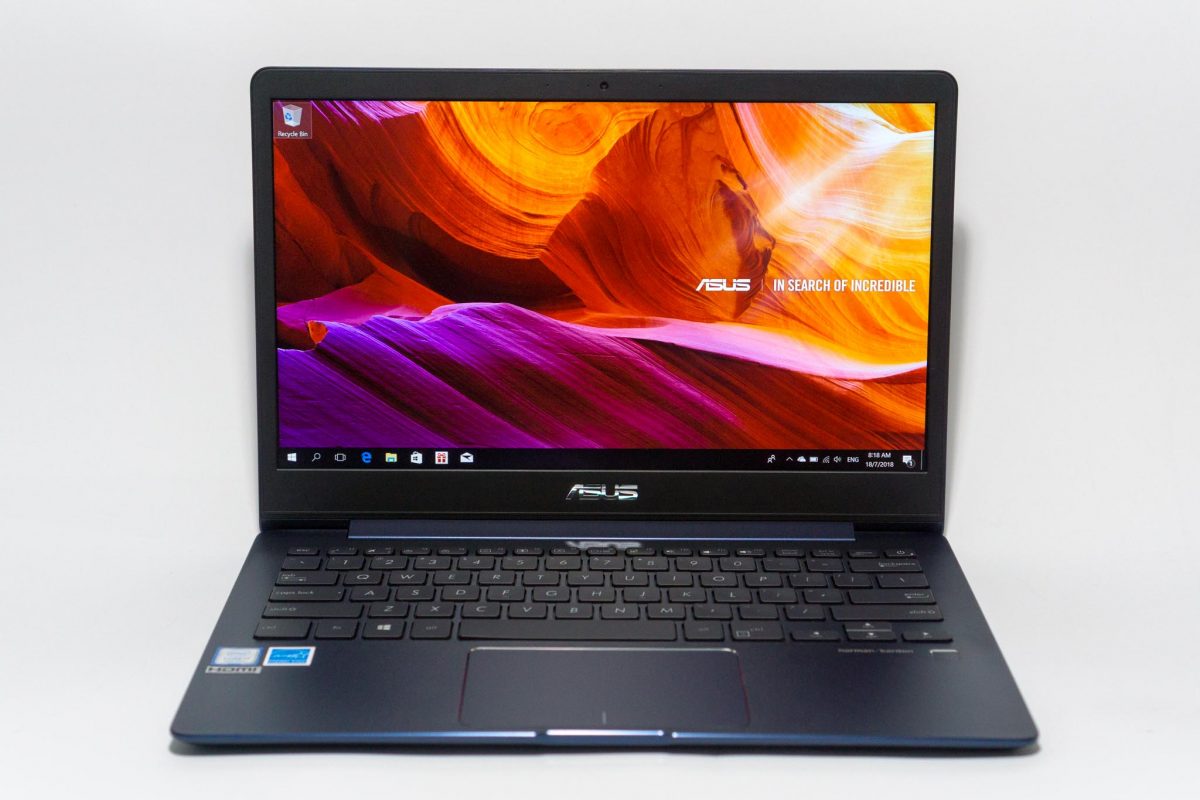
The 13-inch display has small 6.86 mm bezels on the sides. It’s slightly thicker at the top, though I’ve no complaints there. At least ASUS has kept the webcam there, though I should mention that VGA resolution in 2018 is unacceptable.
Although the 1080p screen looks good with bright vivid colours. But although ASUS claims 100% sRGB colour gamut coverage, my own measurement fell slightly short at 96%, with NTSC coverage down to 66%. Movies and games will do just fine on the UX331’s screen, but could be an issue if you need good colour coverage for such tasks as photo editing.
Under the hood, the ZenBook 13 UX331 sports excellent performance. The 8th generation Intel Core i7-8550U is pretty common place by now, but this ultrabook stands out by offering dedicated graphics using NVIDIA GeForce MX150. Of course, this doesn’t make the UX331 a gaming notebook, but you’ll definitely get a significant boost in graphics performance.
The UX331 comes with 16 GB DDR4 2133 MHz and 512 GB of SSD storage.
For those looking at benchmark numbers, here’s how the ZenBook 13 UX331 scores:
- PCMark 10 Extended: 2975 (helped mainly by Gaming sub-score of 2144)
- Geekbench 4: 4666 (single-core), 14636 (multi-core), 41278 (compute)
- 3dMark: 946 (Time Spy), 7321 (CloudGate)
- PCMark 8 Home Battery Test: 219 minutes
The ZenBook 13 UX331 performs most as you’d expect a i7-8550U would, but the MX150 is clearly giving it a boost anywhere that graphics counts.
The 50 Wh battery runtime is slightly on the short side. It may get you through a work day if you take care to use it lightly.
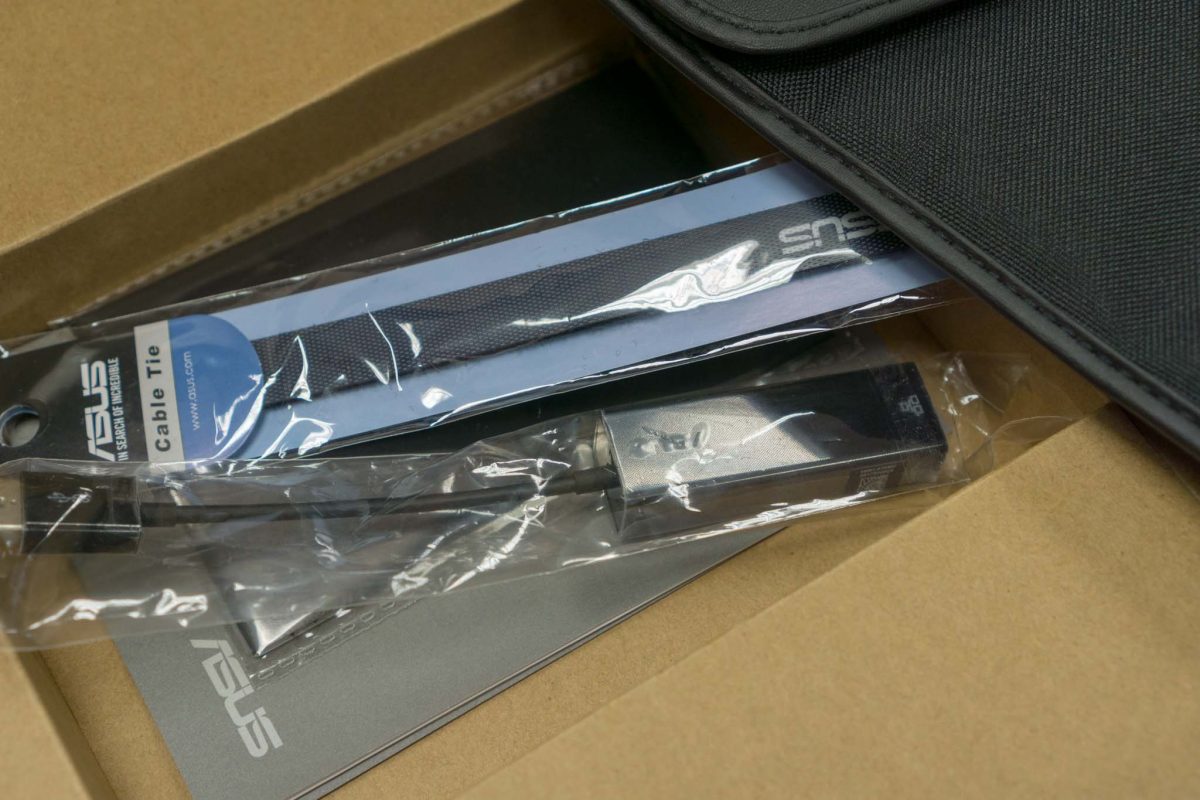
As with most other ZenBooks, a nice case is included in the box. An extra bonus for the UX331 is that a USB to Ethernet dongle is also bundled.
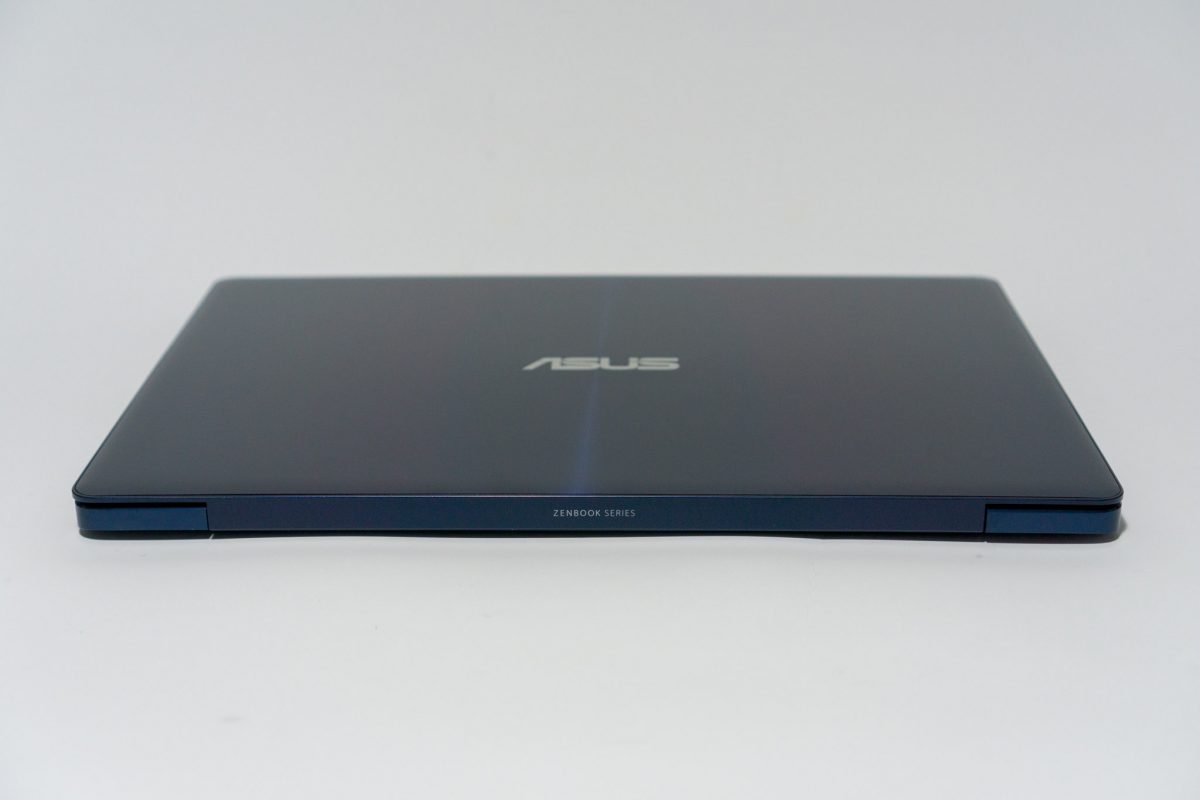
The ASUS ZenBook 13 UX331 retails at S$1998, which is rather competitively priced considering the inclusion of dedicated GPU in an ultrabook chassis.
Conclusion
The ASUS ZenBook 13 UX331 takes an already familiar design and adds a beautiful, stunning, finish, and throws in a dedicated GPU for a boost in graphics performance.
Pros:
- Compact and light
- Beautiful design
- Dedicated NVIDIA GeForce MX150
- Good keyboard
Cons:
- Fingerprint magnet on lid
- No USB Type-C PD charging
View Comment Policy